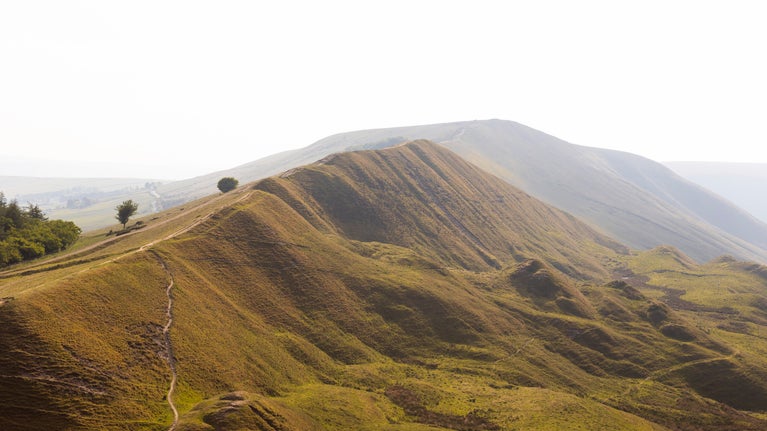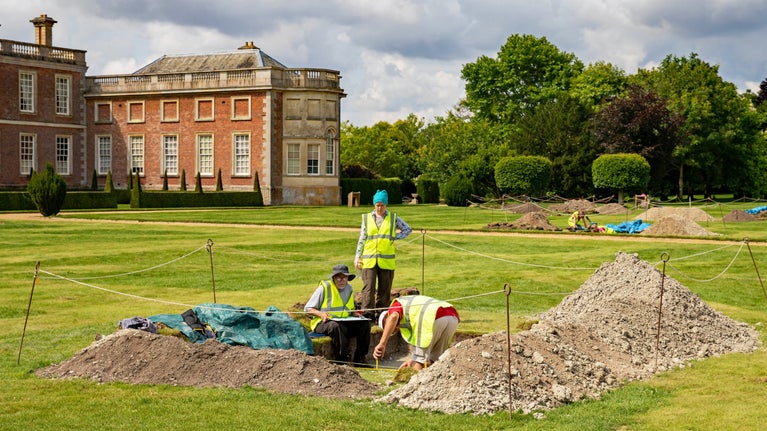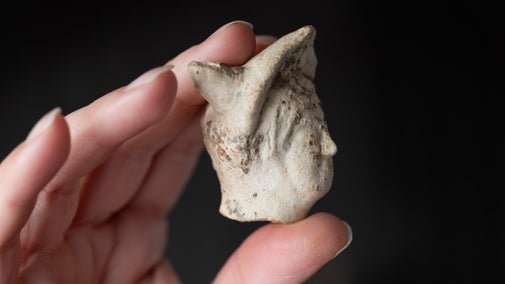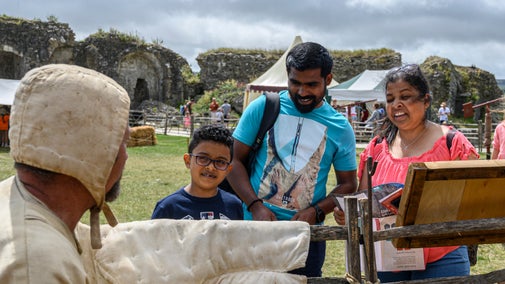
Archaeological work
We look after many rich and diverse archaeological sites. Archaeology helps us to learn more about them and protect them for the future.

Our archaeologists help protect over 90,000 archaeological sites, ranging from stone circles and Roman mines to medieval monasteries and Cold War research facilities. It’s one of the largest collections of archaeological places in the UK, covering more than a million years of human history.
We take care of more than 1,700 nationally important monuments, eleven world heritage sites and thousands of historic objects, spanning coastlines, countryside, forests and gardens. They all tell powerful stories about how people lived, worked and shaped the land.
Archaeology helps us understand how people and landscapes have changed, how people lived, and how the past connects to our lives today. Through research and excavation, we find stories that have been hidden or forgotten.
Our archaeologists support our places by helping to reveal, conserve and share the rich histories held in our landscapes. They are scientists revealing hidden stories to help us make sense of the past and plan for the future.
We use a range of techniques, like geophysical surveys, excavations and scientific research to learn about places and objects.
At Wimpole Estate in Cambridgeshire, a dig revealed an Iron Age and Romano-British settlement, along with a rare 5cm figurine. It provided new insight into Celtic and Roman cultural beliefs and fashions.
At Chedworth Villa in Gloucestershire, fine mosaics and luxurious living spaces were once thought to have ended with the Roman withdrawal in 410 AD. But new research found that mosaic-making continued well beyond this date, changing what we know about Roman Britain.
Archaeology also supports our nature recovery work. It helps us understand lost habitats and how land use has changed over time. From this, we can better predict how landscapes could evolve in the future.
At Attingham Estate in Shropshire, plans for woodland creation led to the largest ever geophysical survey on our land, covering 1,000 hectares. It uncovered the remains of a Roman city called Wroxeter, including villas, cemeteries and industrial sites.
Taking care of archaeological sites is vital for their long-term survival. Our teams give advice on how sites are managed and accessed. This includes protecting them from damage, climate change and erosion.
Our Heritage and Archaeology Ranger Team (HART) and volunteers regularly monitor sites and help with conservation. For example, at Dinas Dinlle, in North Wales, archaeologists and the local community worked together to record findings at the Iron Age hillfort which is threatened by coastal erosion and at risk of falling into the sea.
You can often see archaeology in action. From active excavations to tours and artefact handling, these moments help bring the past to life.
In the South Downs, visitors have joined community digs to explore local history. Across the country, teams at many places we care for take part in the Festival of Archaeology for two weeks in July. It's overseen by the Council of British Archaeology and features guided walks, talks, storytelling and activities like mosaic making and pottery.
Through our work, we’re not just exploring the past, we’re connecting people with it. We're also helping them make sense of the present and plan for the future.

We look after many rich and diverse archaeological sites. Archaeology helps us to learn more about them and protect them for the future.
From hillforts to stone circles, gold mines and medieval castles, there's plenty to explore at the historic places in our care. Discover reminders of the past that tell the stories of our ancestors.

Artefacts found at the places we care for can help us understand what life was like in the past. Learn about five of our most intriguing finds and what they reveal.

The UK's annual Festival of Archaeology will take place from 19 July to 3 August 2025. Find events and activities at archaeological sites in our care.
